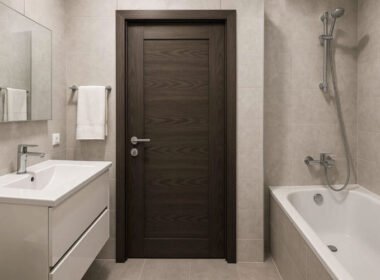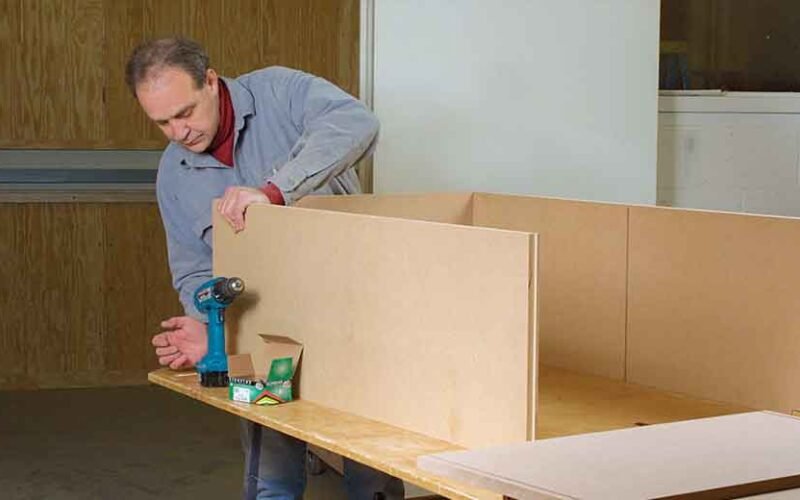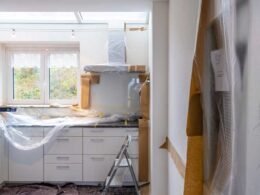If you’ve dabbled in DIY projects or explored the construction world, you’ve likely come across MDF sheets. This versatile material has become a favourite among hobbyists, tradespeople, and builders alike due to its affordability, smooth finish, and adaptability. But what exactly is MDF, and why has it become such a popular choice?
In this article, we’ll explain what MDF sheets are, how they’re made, their advantages and disadvantages, and the many ways they’re used in both DIY and construction projects across Australia.
What Is MDF?
MDF stands for Medium Density Fibreboard. It’s an engineered wood product made from wood fibres that are combined with resin and compressed under high pressure and heat to form smooth, dense panels.
Unlike natural timber, which consists of solid wood with a grain, MDF is manufactured with a uniform, consistent texture throughout. This means it doesn’t have knots, splinters, or grain patterns, making it easier to cut, paint, and finish.
How Is MDF Made?
The manufacturing process involves:
- Breaking down wood — Small wood fibres, often from softwoods or recycled wood waste, are shredded into fine particles.
- Mixing with resin and wax — These fibres are blended with adhesive resins and wax to bind the fibres and improve moisture resistance.
- Forming a mat — The mixture is then formed into a large mat.
- Compressing and heating — The mat is subjected to high pressure and heat to compress the fibres into dense sheets.
- Cutting to size — The compressed board is cooled and cut into sheets of varying thicknesses, typically ranging from 3mm to 30mm or more.
Why Is MDF So Popular?
- Smooth, Uniform Surface
MDF has a flat, smooth surface that’s ideal for painting, laminating, or veneering. Unlike plywood or particleboard, its even texture means you get a flawless finish with less preparation. This makes MDF perfect for furniture, cabinetry, shelving, and decorative trims where appearance matters.
- Easy to Work With
MDF cuts, drills, and shapes cleanly without splintering, thanks to its uniform structure. Whether you’re using hand tools or power tools, MDF is less prone to cracking or chipping compared to natural wood.
- Cost-Effective
MDF is typically cheaper than solid timber or plywood, making it a budget-friendly option for both DIY enthusiasts and professional builders. Because it utilises wood waste fibres, it’s also an efficient way to get value from timber by-products.
- Consistent Quality
Since MDF is manufactured, its quality is consistent from sheet to sheet. There are no knots, warping, or other natural defects, so you can expect reliable performance and uniform thickness, which is especially important in precise joinery or cabinet making.
- Available in Various Sizes and Thicknesses
MDF sheets come in many sizes and thicknesses, allowing flexibility for different applications. Common sheet sizes in Australia are 2400mm x 1200mm or 2440mm x 1220mm, with thicknesses ranging from thin panels for cabinet backs to thick boards for structural applications.
Common Uses of MDF Sheets in DIY and Construction
- Furniture and Cabinetry
MDF is often the material of choice for making cupboards, wardrobes, shelves, and other furniture. Its smooth surface can be easily painted or veneered with decorative finishes, giving a high-quality look at a fraction of the cost of solid timber.
- Interior Wall Panelling and Decorative Mouldings
Because MDF is easy to shape and paint, it’s widely used for wall panelling, skirting boards, architraves, and cornices. These decorative elements can be crafted with intricate profiles and painted to match any interior design style.
- Doors
Many interior doors, especially those with flat or panelled designs, are constructed from MDF. They offer a smooth surface that can be painted and are more stable than solid timber doors, resisting warping over time.
- Craft Projects and DIY
DIYers love MDF for making customised storage units, toys, picture frames, and small furniture pieces. Its affordability and workability make it perfect for experimenting with designs without breaking the bank.
- Exhibition and Display Stands
Because MDF is easy to cut and paint, it’s often used in retail displays, trade show stands, and signage where appearance and cost-efficiency are key.
Things to Consider When Using MDF
- Moisture Sensitivity
Standard MDF is prone to swelling and damage when exposed to moisture or water. For areas prone to damp or humidity (like bathrooms or outdoor projects), moisture-resistant MDF variants are available, but even these should be sealed and painted well.
- Weight
MDF sheets can be heavier than plywood or particleboard of the same size due to their density. This can make handling and installation more physically demanding.
- Dust Hazards
Cutting or sanding MDF produces very fine dust that can be harmful if inhaled. It’s important to wear appropriate respiratory protection and work in well-ventilated areas when machining MDF.
- Fastener Holding
While MDF holds screws well when used properly, it doesn’t have the grain structure of solid wood, so fasteners can strip if over-tightened. Pre-drilling holes and using appropriate screws designed for MDF helps avoid damage.
How to Care for MDF
- Seal and paint: Always seal edges and surfaces before painting to protect against moisture.
- Avoid prolonged water exposure: Use in dry, indoor environments unless you use a moisture-resistant variant.
- Handle carefully: Support MDF sheets during transport to avoid breakage or warping.
- Use dust control: When cutting, use dust extractors or wear masks to minimise dust inhalation.
Conclusion
MDF sheets have rightfully earned their place as a staple material in Australian DIY and construction projects. Their affordability, smooth finish, ease of use, and versatility make them ideal for everything from furniture making and interior panelling to custom DIY creations.
While MDF does have some limitations like moisture sensitivity and dust hazards, these can be managed with proper handling and finishing techniques. Whether you’re a seasoned builder or a weekend DIY enthusiast, MDF offers a reliable, cost-effective solution to many woodworking challenges.










